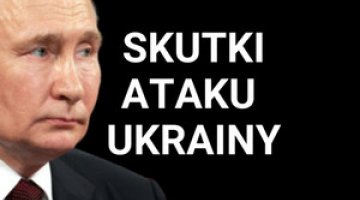Attempts to break through Russian defences at Robotyne. Day 538 of the war

In the period of 11-16 August, heavy fighting continued along the Zaporizhzhia front, with the Ukrainians maintaining the initiative and conducting offensive operations. As a result, the breach in the front of the Russian 58th Army between the villages of Robotyne and Verbove has deepened. According to the assessment of some Russian semi-official military channels, the invaders’ detachments in the vicinity of the former village are now in a difficult position. The Ukrainians are also continuing their offensive operations in the Russian 5th and 36th Armies’ defensive zone south of Velyka Novosilka. The offensive is focused at the junction of these two armies where it runs along the Mokri Yaly river. At the same time, Ukrainian forces are steadily attacking the enemy on the wings in the area around the villages of Pryyutne and Kermenchyk, which are located about 10 km from the axis of the main assault. As a result of these actions, the Russians were pushed out of Urozhayne, most likely on 11-12 August; Kyiv confirmed this on the 16th. They have since taken up positions on both banks of the Mokri Yaly river, at the level of the village of Zavitne Bazhania.
Local fighting is continuing along the lower Dnieper, where back in June and July the defenders reconstituted their bridgeheads along the right bank of the river in the vicinity of the destroyed Antonovsky Bridge and on parts of the islands between Kherson and Hola Prystan. They have probably also succeeded in maintaining their bridgehead near the village of Kozachi Laheri (halfway between Nova Kakhovka and Kherson), which they captured at the start of August. The activities of sabotage and reconnaissance groups in the area also allowed Ukraine to carry out an effective psychological operation on Russian social networks between 8 and 13 August. They published several videos of POWs taken in the area, which triggered a wave of commentary on the Russian side, increasing the sense of threat; it also drew attention to the use of troops made up exclusively of reservists to fight the Ukrainian special forces.
At Bakhmut, the situation along key sections of the front south and north-west of the town has stabilised in recent days. The Russians have reinforced their group in the area with reserves and carried out a series of local counterattacks; as a result they have been able to halt the Ukrainian offensive, especially along the Kurdiumivka-Andriyivka-Klishchiivka line. They have maintained at least some of their positions in buildings in these villages, and the Mayorsk-Bakhmut railway line now forms the basis of their defence in the area.
The invaders are continuing their offensive operations along the section of the front located between the border and the River Donets (the borderland of Luhansk, Kharkiv and Donetsk oblasts). The heaviest fighting is taking place in its northern part, where 6th Army units are attacking towards Kupiansk and the Kupiansk-Svatove road. The attackers have an advantage there, including in artillery, largely due to well-functioning logistics based on the state border and secure communication routes. They are also trying to push along the Svatove-Borove axis, where in previous weeks they had managed to gain a bridgehead on the right bank of the Zherebets river, albeit no more than 4-5 km deep. However, the Russian 2nd Army brigades fighting in this area have not been able to develop an advance towards Borovka as they have encountered Ukrainian counterattacks.
On the night of 13-14 August, the Russians launched another major air attack with Odesa as its main target (using a total of 15 Shahed 136/131 drones and eight Kalibr cruise missiles). The anti-aircraft defence declared that all of them had been shot down, although some of the missiles and drones caused local damage and started fires in various areas of the city. On the night of 14-15 August, the invaders again attacked the Ukrainian rear, this time using 28 cruise missiles of various types (20 Kh-101/Kh-555s, 4 Kalibrs and 4 Kh-22s), in addition to launching eight missiles from S-300/S-400 systems. The Ukrainian Air Force Command reported that it had neutralised 16 cruise missiles. Other missiles fell on targets located in Lviv and Lutsk, among other localities. According to Russian ‘war correspondents’, the targets of the strike in Lviv were the airport and the nearby LORTA factory, which manufactures and repairs communications equipment. In Lutsk the rockets hit a bearing factory owned by the Swedish company SKF, and three of its employees were killed. On the night of 15-16 August, the Russians struck ports located in Odesa oblast. According to the Ukrainian Air Force Command, the air defence shot down 13 out of the 16 Shahed 136/131 type drones used. The Ukrainian side has so far not reported any losses from the strikes by the other three drones.
On 12 August Colonel Yuri Ihnat, the spokesman for the Ukrainian Air Force Command, stated that anti-aircraft defences had so far shot down a total of 14 Kinzhal hypersonic missiles and more than 20 Iskanders and S-400s. He also reiterated the Ukrainian side’s earlier assessments of the enemy’s capacity for manufacturing long-range missiles, stating that the Russians can produce almost 100 missiles of various types per month.
On the night of 11-12 August, the Ukrainians carried out an aerial drone attack on a Russian military training camp near Eupatoria in Crimea. According to unofficial information, the attack was allegedly planned and carried out by the Security Service of Ukraine. The Russians were said to have suffered heavy losses in personnel and equipment. Russian sources confirmed the fact that the attack did happen, but did not mention any losses. On 12 August, the Russian Defence Ministry and the authorities in occupied Crimea also reported a failed attempt by a Ukrainian missile to attack the Crimean Bridge. They reported that S-200 missiles were shot down, and that traffic across the crossing had temporarily been halted.
On 14 August, the US announced another military support package for Ukraine. This one is worth $200 million, and will include missiles for Patriot medium-range air defence systems, missiles for HIMARS rocket launchers, mine clearance equipment, 105-mm and 155-mm artillery shells, 120-mm tank ammunition, anti-tank guided missiles for the TOW & Javelin systems and anti-tank grenade launchers, 37 tactical vehicles for towing and transporting equipment, 58 trailers, and more than 12 million small arms ammunition and grenades.
On the same day, the Norwegian defence ministry announced that Kongsberg Defence & Aerospace had signed a $70.5 million contract to manufacture and deliver Cortex Typhon C-UAS (Counter-Unmanned Aerial System) to Kyiv; the number ordered was not stated. The purchase is being funded by the UK-led International Fund for Ukraine (IFU), with contributions from Norway among others.
On 15 August, Sweden announced its 13th military support package for Kyiv, valued at $314 million. One-third of this amount will be consumed by the provision of spare parts for CV9040 infantry fighting vehicles, Stridsvagn 122 (Leopard 2A5) tanks and FH-77 Archer howitzers, which Stockholm has already provided to Ukraine. The remaining funds will be used to supply missiles and spare parts for the HAWK and IRIS-T anti-aircraft systems, mine clearance equipment and transport vehicles. In addition, the Swedish government has asked parliament to approve the resale to the US of Rb 99 air-to-air missiles (a variety of the US made AiM-120B AMRAAM missile produced under licence in Sweden). The US would then supply these to Ukraine, and offer to sell more modern versions of the AMRAAM to Sweden.
On 11 August, President Volodymyr Zelensky announced that the National Security and Defence Council (NSDC) had decided to dismiss all heads of the regional recruitment centres responsible for carrying out mobilisation. This came after a meeting of the NSDC at which representatives of anti-corruption investigative bodies, the Prosecutor General’s Office and the SBU presented the results of their own investigations. Zelensky announced the appointment of people with combat experience and good reputations to replace the dismissed officials, for which General Valery Zaluzhny, the Commander-in-Chief of the Armed Forces of Ukraine, is to be personally responsible.
On 13 August, the Russian defence ministry announced that arms had been used to stop the cargo ship Sukra Okan, flying the flag of Palau and bound for the Ukrainian port of Izmail on the Danube. : According to the ministry, the captain did not respond to orders from the Russian services, which forced him to stop by fire warning shots. Subsequently, in the ministry’s telling, a Ka-29 helicopter with a group of Russian soldiers “was lifted from the deck of the patrol vessel Vasily Bykov to carry out an inspection”. The incident prompted a response from Kyiv, which called on the UN and the international community to condemn Russia and take action “to stop Russian terror in the Black Sea”.
On 15 August, the authorities in Kyiv strongly criticised a statement made by Stian Jenssen, head of the office of NATO Secretary General Jens Stoltenberg, who speculated in an interview with the Norwegian newspaper VG that Ukraine would have to cede part of its territory in order to achieve peace and gain NATO membership. NSDC secretary Oleksiy Danilov expressed astonishment at this statement and described it as a “completely incomprehensible and strange intervention”. He stated that Ukraine would not rest until Russian troops were expelled from all occupied territories. A spokesman for the Ukrainian Foreign Ministry called Jenssen’s words “absolutely unacceptable” and stated that the government in Kyiv does not intend to trade their territories for anything.
Commentary
- The Russian 58th Army command has probably already committed most of the units in its zone of operations – from the now dried-up area of the former Kakhova reservoir near Kamianske to the Orekhiv-Polohy road near Novopokrovka – to defending its advance positions. In view of the growing Ukrainian wedge pushing deeper and deeper into the Russian grouping between Robotyne and Verbove, the questions arise of whether the Russians will be able to form a reserve grouping which could launch counterattacks, and whether they can form a second line of defence. In recent days, the invaders have been forced to pull various units back at Robotyne; these include the 108th Air Assault Regiment, which is part of the 7th Air Assault Division that has been defending the line along the lower Dnieper. This is another case in recent weeks of the Dnieper Army Grouping being weakened in favour of the Zaporizhzhia front: previously, the 34th Motorised Rifle Brigade and the 247th Air Assault Regiment (also from the 7th Division) were diverted to the 5th Army’s zone of defence.
- The Russians are in a more favourable position in the 5th and 36th Army’s zone of operations, where – despite the greater field successes for the Ukrainians – they have more powerful operational reserve (at least four mechanised brigades), which have so far been little used in combat. As it would appear, the maintenance of such a large rearguard grouping on this section of the front is due to the command’s concern that the Ukrainians could launch strikes in the neighbouring areas. Principally this concerns the area around Vuhledar, from where they could attack the eastern wing of the 36th Army, or the area of Volnovakha. This latter locality is a key junction, and retaining it is essential for the stability of the Russian front in the Donbas and the Sea of Azov.





